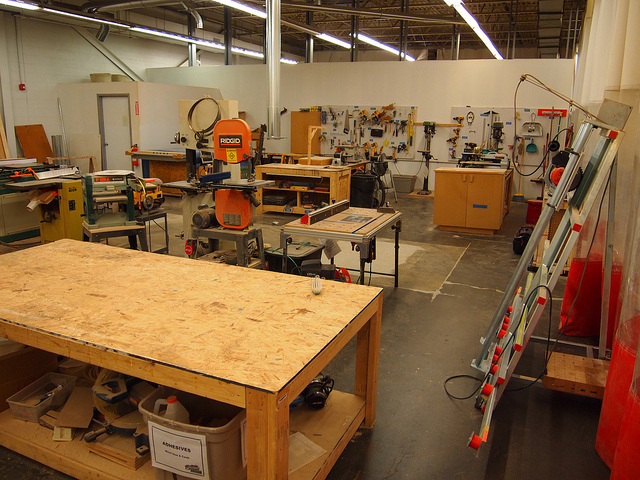We were trying to setup a makerspace ourself and we found it really difficult with the amount of stuff that needs to be done. There are 2 main things that a makerspace needs to do 1) Build a culture and an experience 2) Manage operations. (There might be more, but this is what we learned)
Both are important, but building a culture and an experience is what defines the personality of a makerspace. Managing operations is the part that needs to be done in order to keep the makerspace and the community from falling apart. We struggled with these 2 things before we shut shop.

Space is one aspect of culture and experience. (Image credits-http://makezine.com/2013/09/22/the-makerspace-chasm/)
What we realized is that 1) Building a culture and an experience is the fun part. It is the unique part. This is the part that differentiates one makerspace from another. This is the part that makes you want to go hang out at a makerspace. Part 2) Managing operations is a lot of work, it is more or less common between makerspaces and most importantly it can be automated, freeing up time for the awesome folks at the makerspace to build more interesting experiences.
These are the items that we realized that a typical makerspace management role includes:
1. Multiple membership plan details
2. Membership payment collection and follow up
3. Member access permissions/tool usage permission
4. Tool certification for members
5. Member demography and contact information
6. Member emergency contact information
7. Equipment / space rental management/waiting list
8. Managing members in a discussion
We are building a service for membership management for makerspaces. Our objective is simplify running a makerspace operations so that more amazing makerspaces will pop up around the world. We ran a quick survey with some makerspaces - link to survey
Here are some response from the survey. We will be publishing a detailed info graphic soon. This was the most important question that we asked in the questionnaire - "What tools are you using for membership management now? How do you know which member has what level of membership, what level of permissions?" Here are responses from some makerspaces.
| South London Makerspace | We have a custom system that we built. |
| shackspace | We use several Excel Sheets for membership collection. There is only a very limited permission system which is kept on paper. Usually, when someone takes over the responsibilities of treasurer, they want to change to another tool which itsselfs usually not that well suited for our purpose. |
| HSBNE | Xero, Xero API hooked into RFID door system |
| South London Makerspace | We use our own membership database and subscription system written in node.js, and using GoCardless for payment processing. All other matters are handled in an ad-hoc manner. We are not yet large enough to require dedicated management software. |
| i3Detroit | We use SeltzerCRM, which was written in-house. It tracks people, keys, membership plans, and payments. It doesn't currently integrate with Google Groups for adding/removing people from the discussion groups, that's done manually. It doesn't currently integrate with OpenAccessControl for door key updates, that's done manually. It doesn't currently track tool permissions or usage, that's done on the honor system. It doesn't currently allow members to sign themselves up, data entry is done manually. |
| 57North Hacklab | LDAP + homebrew PHP/MySQL solution We only have one level of membership Permissions are managed as LDAP groups |
| toronto tool library & Makerspace | paypal, RFID access, Basic excel sheets. not very effective. Im interested in this kind of thing. We have just started to use "sumac". membership based database management program. - we have lasersaur laser cutter - CNC router - makerbot 3d printers 1. all three need 2-3 hour (2 days) training and a physical certification made. We have waivers for any permanent use or member use. Payed jobs to anyone who doesn't want the membership. |
| Phoenix Asylum | Members pay with check or cash monthly, which is tracked on a google spreadsheet. When rent fees are changed annually additional spreadsheets are used to calculate the new rates based on actual increases. Equipment is not managed in any structured way right now. Large use of the space that would dominate the common area is managed on a Google Calendar. |
| Hackerspace Maringá | We use a wordpress plugin to do the job, but we control the members and budgets in a google docs spreadsheet. |